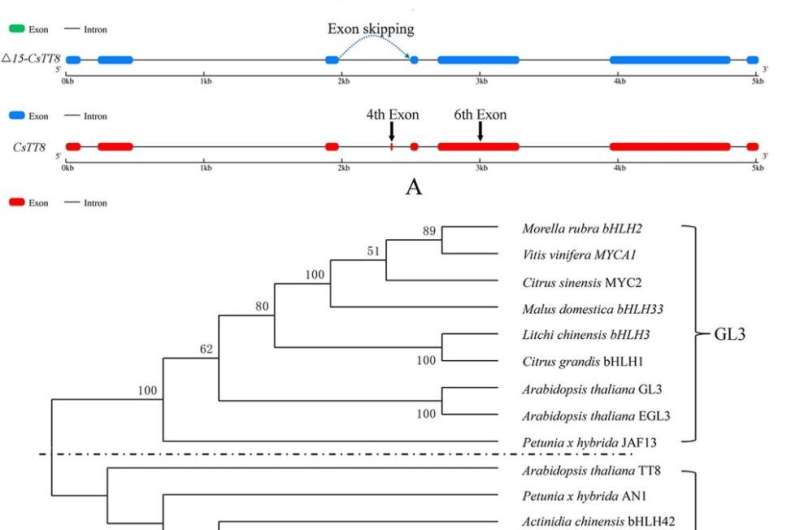This article has been reviewed according to Science X's editorial process and policies. Editors have highlighted the following attributes while ensuring the content's credibility:
fact-checked
peer-reviewed publication
trusted source
proofread
Alternative splicing and transcription factor interplay in blood orange anthocyanin biosynthesis

The blood orange, renowned for its vibrant color due to anthocyanins, is a focus of increasing demand in the nutraceutical industry, with 'Tarocco' [C. sinensis (L.) Osbeck] being the most widespread variety. Current research sheds light on the genetic mechanisms underpinning anthocyanin production, such as the activation of the RUBY1 transcription factor and the importance of the MBW complex.
However, challenges remain in fully understanding the relationship between abscisic acid signaling and pigment biosynthesis, as well as the role of alternative splicing in fruit quality.
In September 2023, Horticulture Research published research titled "CsTT8 regulates anthocyanin accumulation in blood orange through alternative splicing transcription." This study unveils the intricate role of TT8, a basic helix-loop-helix (bHLH) transcription factor, in anthocyanin biosynthesis and fruit quality in blood orange, focusing on the effects of alternative splicing.
This study initially identified a homologous gene of the Arabidopsis basic helix-loop-helix AtTT8, designated as CsTT8, within the blood orange (Citrus sinensis cv 'Tarocco' ). Subsequently, three distinct alternative splicing events concerning the CsTT8 gene were observed, highlighting the production of Δ15-TT8, which lacks a critical SAHIQ motif due to exon skipping. This aberrant splicing variant was found to downregulate TT8 expression, impacting pigment accumulation negatively.
The research method involved comparing mRNA levels and anthocyanin content between wild-type and mutant fruits lacking pigmentation, revealing that the wild type exhibited higher TT8 expression and anthocyanin content, while mutants showed elevated Δ15-TT8 levels and reduced pigmentation and citrate content.
Further, yeast one-hybrid and two-hybrid assays demonstrated that TT8 interacts with RUBY1 and WD40 to form regulatory complexes essential for activating anthocyanin biosynthesis genes, whereas Δ15-TT8's interaction capabilities were compromised. Subcellular localization studies confirmed that TT8, but not Δ15-TT8, localizes to the nucleus, underlining its role in gene regulation.
Subsequently, research found that TT8 appears to bind with RUBY1 or MYB5 to form two different regulatory complexes, regulating anthocyanin biosynthesis and vacuolar acidification, respectively. Transient overexpression experiments validated the functional significance of the TT8 regulatory complexes in anthocyanin and citrate production, also suggesting an influence on abscisic acid (ABA) biosynthesis.
The study also found that applying exogenous ABA to fruit trees can upregulate the transcription of TT8 before fruit ripening, increase anthocyanin content, and improve fruit quality, highlighting the regulatory interaction between ABA and TT8.
Overall, this study not only advances our understanding of the genetic and molecular mechanisms underlying fruit quality traits in blood oranges but also demonstrates the complex interplay between alternative splicing, transcription factor interactions, and plant hormone signaling in regulating these processes.
More information: Jianhui Wang et al, CsTT8 regulates anthocyanin accumulation in blood orange through alternative splicing transcription, Horticulture Research (2023). DOI: 10.1093/hr/uhad190
Journal information: Horticulture Research
Provided by NanJing Agricultural University





















